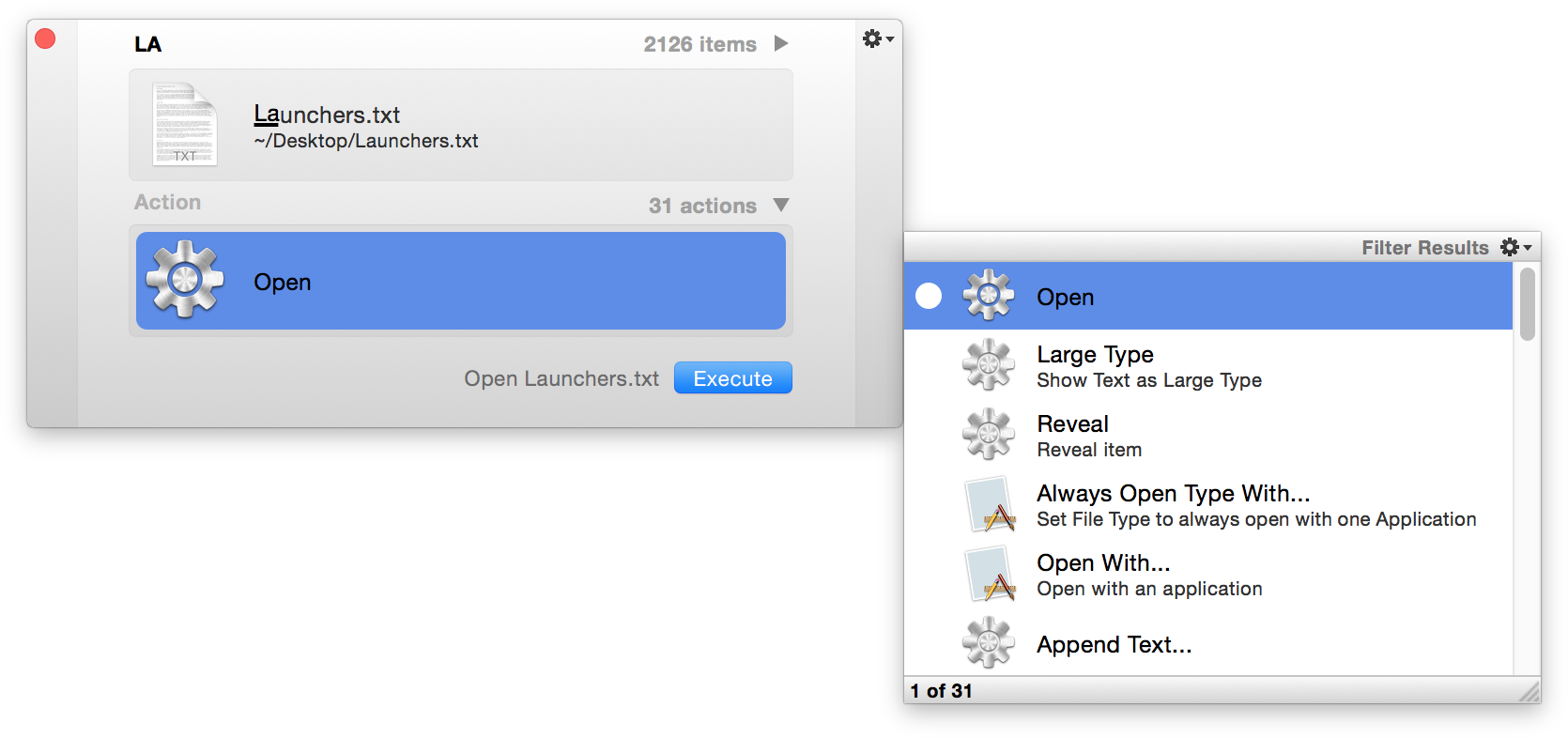Quicksilver App Launcher For Mac
We wouldn’t consider the macOS app launcher space a crowded one, but there are enough options out there that could make you think twice about clicking the download button. After numerous keystrokes and much reflective deliberation, we think that is the favorite launcher for macOS. What is an app launcher?
If you are a Mac user, then you have a launcher already installed. Spotlight has been a part of the Mac OS ever since version 10.4 Tiger, and even though its feature set has evolved since then, its purpose started out simple: To help you find and launch files and apps faster than it would take you to navigate to the location with a mouse.
While Spotlight wasn’t the first launcher for macOS, today it sits among a variety of good choices for you to pick from. But the word “launcher” has become less of a descriptor of what you are getting and more of a legacy term. Launchers now give you instant feedback like showtimes, news, and articles, and they’ve also become sort of an automation playground offering plug-ins and scripts for you to accomplish a series of tasks with just a couple of keystrokes. With its history in mind, we sought to find out which launcher gave us the best experience in daily use while also offering powerful features to those who wished to take advantage of them. Get Back Hours Per Week Discover how to improve your workflows and get more focus with this free, in-depth guide to productivity. Other launchers to consider LaunchBar You can’t talk about launchers without talking about. It has been around longer than Spotlight and has a very loyal user base — a user base that may be shocked and bewildered that their app wasn’t crowned the winner.
It could be argued that LaunchBar matches or surpasses Alfred’s abilities as a launcher, but we thought that Alfred did some key things better — particularly its first-launch experience, intuitive usability, and free option for new users. A user coming from an app like Spotlight may find it difficult to navigate through LaunchBar on initial launch. Your first instinct is to type search terms and do something with them while having the option to backspace and fix mistakes. But things are done differently in LaunchBar. You can’t just type “Samuel” space “Jackson” and be able to do something with that text.
By typing that into LaunchBar, it would actually result in bringing up a smiling face emoji (granted he isn’t in your contacts). LaunchBar doesn’t give you full live-preview of what you’re typing, and this can make a new user feel unsure that they are actually on the right track. If your search doesn’t result in anything local, you aren’t greeted with fallback search options like Alfred offers, and unless you trigger an action with a keyword, the spacebar doesn’t separate text. Instead, it’s used in different ways within LaunchBar like opening a directory or performing a QuickLook. Its one-to-many functionality could get confusing at times. In addition to the way it takes in text, its preferences aren’t the best resource for learning specific keywords that you would need to know for navigation.
Alfred does a great job in keeping their preferences uncrowded, yet they explain what different keywords and options do throughout each pane. Things just feel less intuitive when you first use LaunchBar, but after you have done some homework, tweaked some settings, and have learned its syntax, it can provide you with power and integration at the caliber of Alfred. When thinking about LaunchBar and what it has historically brought to the table, it has always seemed to cater toward the power-user market more than any other group. Is it fast, powerful, pretty, and full-featured?
And we don’t want to discount LaunchBar as a viable option, but after much consideration and consultation with other Sweet Setup staff, we thought that Alfred edged it out for the top spot. Costs $29 for a single license and allows a 30-day trial period. You can continue using LaunchBar after the trial period, but it imposes short breaks while using it to encourage you to purchase a license. Quicksilver is another veteran launcher that is open-source. Although it has maintained development sporadically over the years, its unique way of searching requires a complete change of mindset.
Quicksilver App Launcher For Mac Pro
It uses an object + action + argument style of search, and we found that the learning curve — even for advanced users — was more involved. Its user interface doesn’t look too outdated, but it doesn’t match the macOS look very well even after playing around with the color options. That being said, with its extensive plug-in collection and active community, you can unleash a ton of power, but only after digging around and tinkering with its overwhelmingly customizable preferences.
Is a free app. Spotlight Having Spotlight built-in to macOS has its advantages. With this out-of-the-box functionality ready to go, it is the first search tool a new Mac user is exposed to, but I’d like to think that it serves as the training wheels to more powerful utilities.


Spotlight has made some big jumps in macOS recently. The Spotlight window moved from its comfortable top-right corner home that it’s had since OS X 10.4 to the upper-middle section of your screen.
Quicksilver App Launcher For Macbook
It includes new search categories to try to give you more options in your results, and it also brings better auto-completion for search terms. The bigger search box allows for the use of split-view results that are located directly below your search. The left side of the split-view shows the results from different categories, and when a specific result is highlighted, a description is given on the right side. Prior to Yosemite, searches in Spotlight could find files, apps, email messages, dictionary definitions, contacts, and give you the option to search on the web. Additionally, there were some nice tricks like typing in simple math equations that would result in an answer. After Yosemite, Spotlight takes your searches further with the introduction of Spotlight Suggestions.
Similar to iOS, Spotlight Suggestions search the iTunes, iBooks, and App Stores. It also searches locations of places nearby, news articles, Wikipedia, movie showtimes, and Bing. Spotlight’s calculator has also become smarter with the ability to convert distance, temperature, and currency. And with later versions of macOS, Apple continue to add more functionality into this great app. These new features are a great introduction to applications like Alfred and LaunchBar, but they’re just an introduction.
Spotlight may be doing more now than ever before, though I still wouldn’t call it a power user’s product. Its settings are basic, allowing you to uncheck search categories and set basic hotkeys, but Apple didn’t set out to build a complex feature set for macOS. Instead, it set out to build a user friendly feature that tries to serve both its most basic users and experienced ones. If you don’t need the extra bells and whistles that a third-party search utility gives you, then Spotlight is a great default choice. Spotlight is free and preinstalled with macOS.
Conclusion Like we said, there aren’t too many launchers to choose from, but each offer a unique way to get to your stuff faster. And are both great choices, but Alfred’s usability factor, option for free users, custom workflows, and iOS companion app were the ultimate reasons we decided to call it our favorite launcher for macOS.
By. 8:59 am, March 26, 2013. Remember Quicksilver? The lightweight Mac utility used to be the go-to app launcher on the desktop, but that was years ago.
A lack of updates combined with the rise of more feature-rich alternatives like Alfred turned the attention away from Quicksilver long ago. Now the developers behind the app are breathing new life into Quicksilver with a major update. Quicksilver 1.0 has been released, which marks the end of the 10-year beta period the app has been in since 2003.

Quicksilver allows you to easily launch apps and special plugins with programmable keyboard shortcuts. “We’ve worked to simplify Quicksilver and add great documentation (a new manual is coming out!), meaning Quicksilver can be picked up by anyone much more easily than before,” said Patrick Robertson, one of the app’s developers. Apps like this require a third-party development community to really thrive. For instance, a pro of Alfred is developers have come up with to enhance the experience.
The company claims that the app works on iPads all the way back to the iPad 2. We can confirm that this is the case, but we can't recommend anything older than an iPad Air to use as a second display. We've examined a few different for the iPad and MacOS and previously preferred wired implementations in the past, but the Luna Display continues to impress. Hands off2.3.5 full version for mac free. We're not sure we'd want to play games on it, but productivity and email don't suffer at all from it.
With this 1.0 update, Quicksilver is trying to get developers back on its side. “We need to make it as easy as possible for developers and users to create plugins and AppleScript extensions for Quicksilver,” said Robertson. “The true power of Quicksilver comes from our plugin developers, so I’ll be happy once we have a strong dev community back on our side creating great plugins, and over the coming months I’m going to be working hard to try and achieve this – we can always make things simpler for new developers!” Some of the key features include preliminary support for Retina displays, full Mountain Lion support, and more documentation. There’s also all kinds of additions and bug fixes under the hood. This will be the last release to support OS X 10.6. You can download Quicksilver for free.
Comments are closed.